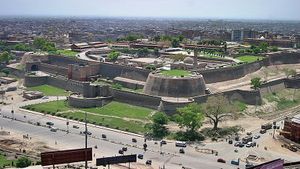الدولة الدرانية
الدولة الدرانية د درانیانو ټولواکمني (Pashto) | |||||||||||||||||||
|---|---|---|---|---|---|---|---|---|---|---|---|---|---|---|---|---|---|---|---|
| 1747–1826 | |||||||||||||||||||
العلم | |||||||||||||||||||
![الدولة الدرانية في أقصى اتساعها تحت حكم أحمد شاه دراني.[1]](/w/images/thumb/1/1b/Durrani_Empire_1747_1862_AD.png/350px-Durrani_Empire_1747_1862_AD.png) الدولة الدرانية في أقصى اتساعها تحت حكم أحمد شاه دراني.[1] | |||||||||||||||||||
| العاصمة | قندهار (1747–1776) كابل (1776–1823, 1839–1842) پشاور (1776–1818؛ العاصمة الشتوية)[2][3] هرات (1818–1826)[4] | ||||||||||||||||||
| اللغات الشائعة | الپشتو (اللغة الرسمية ولغة البلاط)،[5][بحاجة لمصدر] الفارسية | ||||||||||||||||||
| الدين | الإسلام | ||||||||||||||||||
| الحكومة | ملكية مطلقة | ||||||||||||||||||
| الشاه | |||||||||||||||||||
• 1747–1772 | أحمد شاه الدراني (الأول) | ||||||||||||||||||
• 1839–1842 | شجاع شاه الدراني (الأخير) | ||||||||||||||||||
| الحقبة التاريخية | أوائل العصر الحديث | ||||||||||||||||||
• تأسست | أكتوبر 1747 | ||||||||||||||||||
• انحلت | 1826 | ||||||||||||||||||
| |||||||||||||||||||
| Today part of | |||||||||||||||||||
الدولة الدرانية (Pashto: د درانیانو واکمني)، وتعرف أيضاً بامبراطورية الأفغانية (د افغانانو واکمني),[6] أسسها وبناها أحمد شاه الدراني. عند أقصى اتاعها، كانت تغطي ما تشغله حالياً أفغانستان، پاكستان، بالإضافة إلى بعض مناطق من شمال شرق إيران، شرق تركمنستان، وشمال غرب الهند بما يشمل منطقة كشمير.[7]
بعد وفاة نادر شاه عام 1757، طالب أحمد شاه الدراني بمنطقة قندهار. من هناك بدأ غزو غزنة ثم كابل. عام 1749 تنازل حاكم المغل عن السيادة على ما يعرف حالياً بپاكستان وشمال غرب الپنجاب للأفغان. بعدها توسع أحمد شاه غرباً ليستولي على هرات، والتي كانت تحت حكم شاهرخ شاه. أرسل جيشاً لإخضاع مناطق شمال هندوكوش وفي وقت قصير بدأت جميع القبائل المختلفة في الانضمام إلى جانبه. قام أحمد شاه وقواته بغزو الهند اربع مرات، محكماً السيطرة على منطقة كشمير والپنجاب. في أوائل 1757، نهب دلهي، لكنه سمح لأسرة المغل بالبقاء كحكام اسميين طالما اعترف الحاكم بسيادة أحمد شاه على الپنجاب، السند، وكشمير. حرضت القوات الدرانية على ارتكاب مذبحة السيخ 1762 التي سقط فيها آلاف من السيخ في الپنجاب.[8][9][10]
بعد وفاة أحمد شاه في حوالي عام 1772، أصبح ابنه تيمور شاه الحاكم التالي للأسرة الدرانية والذي قرر جعل كابل العاصمة الجديدة للدولة، واستخدم پشاور كعاصمة شتوية. تعتبر الدولة الدرانية هي حجر أساس دولة أفغانستان المعاصرة، حيث يعتبر أحمد شاه الدراني هو "أبو الأمة" الأفغانية.[11]
حكم أحمد شاه الدراني (1747–1772)
الانتصارات المبكرة
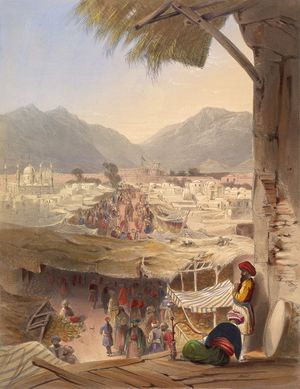

جزء من سلسلة عن |
العلاقات مع الصين
معركة پانيپات الثالثة
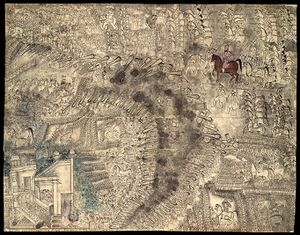
التراجع
قائم حكام الدولة الدرانية
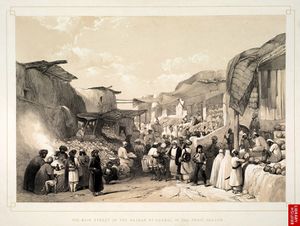
| الحاكم | صورة | من | إلى |
|---|---|---|---|
| أحمد شاه دراني | 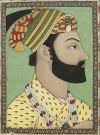
|
1747 | 1772 |
| تيمور شاه بن أحمد دراني | 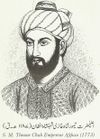
|
1772 | 1793 |
| زمان شاه دراني | 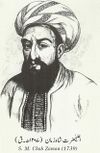
|
1793 | 1801 |
| محمود شاه ادراني (الفترة الأولى ) | 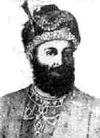
|
1801 | 1803 |
| شجاع شاه دراني | 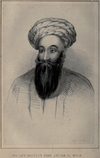
|
1803 | 1809 |
| محمود شاه دراني (الفترة الثانية ) | 
|
1809 | 1818 |
| علي شاه دراني | 1818 | 1819 | |
| أيوب شاه دراني | 1819 | 1823 |
انظر أيضاً
الهوامش
- ^ Mazheruddin Siddiqi. Development of Islamic State and Society (original from the University of Michigan). Institute of Islamic Culture, 1956. page 310
- ^ Hanifi, Shah Mahmoud. "Timur Shah transferred the Durrani capital from Qandahar in 1775-76. Kabul and Peshawar then shared time as the dual Durrani capital cities, the former during the summer and the latter during the winter season." p. 185. Connecting Histories in Afghanistan: Market Relations and State Formation on a Colonial Frontier. Stanford University Press, 2011. Retrieved 2012-08-04.
- ^ Singh, Sarina (2008). "Like the Kushans, the Afghan kings favoured Peshawar as a winter residence, and were aggrieved when the upstart Sikh kingdom snatched it in 1818 and levelled its buildings." p. 191. Pakistan and the Karakoram Highway. Retrieved 2012-08-10.
- ^ L. Lee, Jonathan (1996). The Ancient Supremacy: Bukhara, Afghanistan and the Battle for Balkh, 1731-1901 (illustrated ed.). BRILL. p. 116. ISBN 9004103996. Retrieved March 8, 2013.
[The Sadozai kingdom] continued to exist in Herat until the city finally fell to Dost Muhammad Khan in 1862.
- ^ Schimmel, Annemarie (1976). Pain and Grace: A Study of Two Mystical Writers of Eighteenth-Century Muslim India. BRILL. p. 12. ISBN 978-9004047716.
- ^ "Last Afghan empire". Louis Dupree, Nancy Hatch Dupree and others. Encyclopædia Britannica. 2010. Retrieved 2010-08-25.
- ^ "Archived copy" (PDF). Archived from the original (PDF) on 2013-02-07. Retrieved 2013-02-07.
{{cite web}}: Unknown parameter|deadurl=ignored (|url-status=suggested) (help)CS1 maint: archived copy as title (link) - ^ ^ Khushwant Singh, A History of the Sikhs, Volume I: 1469-1839, Delhi, Oxford University Press, 1978, pp. 144-45.
- ^ ^ According to the Punjabi-English Dictionary, eds. S.S. Joshi, Mukhtiar Singh Gill, (Patiala, India: Punjabi University Publication Bureau, 1994) the definitions of "Ghalughara" are as follows: "holcaust, massacre, great destruction, deluge, genocide, slaughter, (historically) the great loss of life suffered by Sikhs at the hands of their rulers, particularly on 1 May 1746 and 5 February 1762" (p. 293).
- ^ Syad Muhammad Latif, The History of Punjab from the Remotest Antiquity to the Present Time, New Delhi, Eurasia Publishing House (Pvt.) Ltd., 1964, p. 283; Khushwant Singh, A History of the Sikhs, Volume I: 1469-1839, Delhi, Oxford University Press, 1978, p. 154.
- ^ "Afghanistan". CIA. The World Factbook. Retrieved 2010-08-25.
- ^ S. M. Ikram (1964). "XIX. A Century of Political Decline: 1707–1803". In Ainslie T. Embree. Muslim Civilization in India. New York: Columbia University Press. Retrieved 5 November 2011.
المصادر
- Malleson, George Bruce (1879) History of Afghanistan, from the Earliest Period to the Outbreak of the War of 1878 W.H. Allen & Co., London, OCLC 4219393, limited view at Google Books
- Singh, Ganda (1959) Ahmad Shah Durrani: Father of Modern Afghanistan Asia Publishing House, London, OCLC 4341271
- Fraser-Tytler, William Kerr (1953) Afghanistan: A Study of Political Developments in Central and Southern Asia Oxford University Press, London, OCLC 409453
- Tanner, Stephen (2002) Afghanistan : a military history from Alexander the Great to the fall of the Taliban Da Capo Press, New York, ISBN 0-306-81164-2, also available from NetLibrary
- Elphinstone, Mountstuart 1779-1859 An account of the kingdom of Caubul, and its dependencies in Persia, Tartary and India : comprising a view of the Afghaun nation and a history of the Dooraunee monarchy.London : Printed for Longman, Hurst, Rees, Orme, and Brown, 1815. Available in digital formats from the Internet Archive Digital Library [1] [2]
وصلات خارجية
- Afghanistan 1747-1809: Sources in the India Office Records
- Some details and images of Durrani coins
- Biography of Ahmad Shah Abdali (Durrani)
- Ahmad Shah Baba
- History of Abdali tribe
- Afghanistan and the Search for Unity Article on Durrani methods of government, published in Asian Affairs, Volume 38, Issue 2, 2007, pp. 145–157.
- Afghanistan & the British Raj From the Royal Geographical Society of South Australia blog entry with information on the Durrani Empire of Ahmad Shah, "Pearl of the Pearls". From an extensive collection of 19th century British reference works on travel and exploration in Afghanistan.
- CS1 errors: unsupported parameter
- Articles containing Pashto-language text
- Articles with unsourced statements from March 2018
- Pages using infobox country with unknown parameters
- Pages using Lang-xx templates
- Portal-inline template with redlinked portals
- Pages with empty portal template
- Articles with hatnote templates targeting a nonexistent page
- Unclassified articles missing geocoordinate data
- All articles needing coordinates
- الدولة الدرانية
- الأسرة الدرانية
- امبراطوريات وممالك أفغانستان
- امبراطوريات وممالك پاكستان
- امبراطوريات سابقة في آسيا
- امبراطوريات مسلمة
- الحكم الإسلامي لشبه القارة الهندية
- أفغانستان الحديثة
- تاريخ پاكستان
- تاريخ خيبر پختونخوا
- دول وأراضي تأسست في 1747
- دول وأراضي انحلت في 1826
- تأسيسات 1747 في آسيا
- انحلالات 1826 في آسيا
- القرن 18 في أفغانستان
- القرن 19 في أفغانستان
- القرن 18 في امبراطورية المغل


